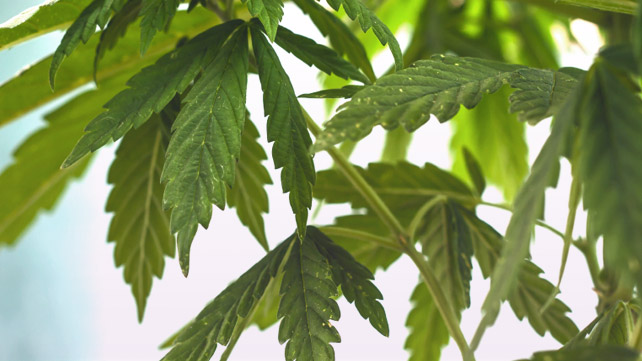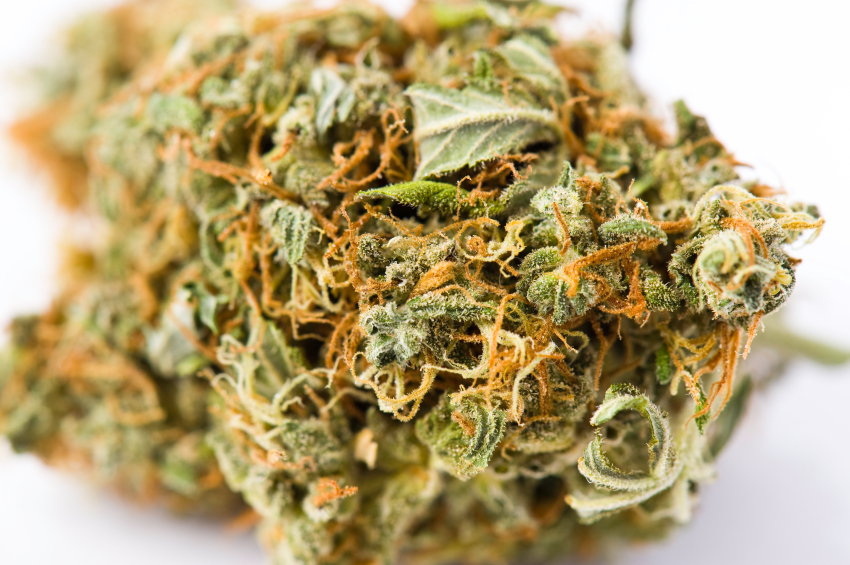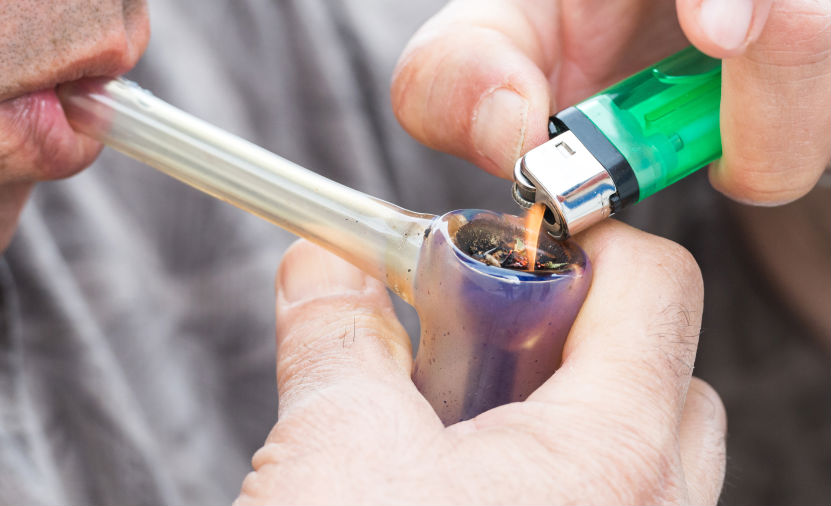Most people can use marijuana
without becoming addicted. But for users with vulnerabilities like
stress, mental illness, or a genetic predisposition, the risk of
dependence is real.
For George, age 60, of Raleigh, North Carolina, quitting
marijuana was no problem.
He began using marijuana in college, sometimes once every
other day, sometimes once every couple of months, and he kept using after
graduation.
“It’s recreational,” he said in an interview with
Healthline. “Why do people have a drink at the end of the workday? Just because
they like it.”
But at the age of 50, he experienced some health problems
and decided it was time to quit. For George, that wasn’t a challenge.
“There was no withdrawal,” he said. “There was certainly no
physical addiction. If you stopped eating chocolate, you would want to have
chocolate again, but it’s not really addictive.”
Millions of
other Americans are like George — they can pick up, and put down,
marijuana relatively easily.
But that’s not the case for everyone. For an unfortunate
few, marijuana poses a substantial risk of addiction.
“I can now admit that I've been psychologically addicted to
weed for the past decade-plus,” confessed writer Kitty Gray, in a story
published in
Vice
last year. “If I need to eat, sleep, relax, be amused, calm down, forget a horrible
experience, practice self-love, run errands of any kind, watch TV, or create
something: I smoke.”
About 9 percent of people who use marijuana will become
abusers, according to a study endorsed by the
National
Institute on Drug Abuse (NIDA). Other
estimates
have placed that number even higher, with young people particularly susceptible
to dependency.
However, millions of Americans use marijuana for all kinds
of purposes — anxiety control, social lubricant, artistic muse, pain reliever —
without the drug becoming a problem in their lives.
So who is at risk for marijuana addiction, and how does this
drug abuse develop?
Read more: If marijuana is medicine, why can’t we buy it in pharmacies? »
Who becomes addicted?
Genes are
one strong predictor of addiction, said Dr. Alex Stalcup, medical director of
the
New Leaf Treatment Center in Lafayette, California.
Studies of identical twins raised in
different families support this theory — they have higher rates of
addiction co-occurring (meaning that if one is addicted, the other is at
greater risk for addiction) than fraternal twins raised apart.
But family
ties may also help some people avoid addiction.
“When we
look at the criteria for addiction, it has a lot to do with people tempering
their behavior,” explained Carl Hart, Ph.D., an associate professor of
psychology at Columbia University, and author of “
High Price,” in an interview with Healthline.
“It has a lot to do with responsibility skills ... It’s not perfect, but when
you look at the people who are addicted, and you look at people who have jobs
and families, they have responsibilities, they’re plugged into their societies,
they have a social network, the addiction rates within those kind of groups are
dramatically decreased from people who are not plugged in with jobs, families,
social networks.”
Those who do
not become addicted also tend to have more options.
“Most of us
have a lot of choice in life of things that make us feel good,” said Gantt
Galloway, Pharm.D., executive and research director of the New Leaf Treatment
Center, and senior scientist at the California Pacific Medical Center
Research Institute, in an interview with Healthline. “Those who have fewer
choices, who perhaps don’t have as rich a set of social interactions because
their family life is difficult or because they have emotional problems that are
stopping them from forming close friendships ... those people may find drugs
such as marijuana more attractive and be at greater risk for addiction.”
"For a
lot of individuals, marijuana is pleasurable, reinforcing, and reliable,"
Galloway added. "If you’re talking about someone who has a chaotic home
situation, someone who isn’t doing well in school, who isn’t getting praise for
good school performance, those people may be at higher risk to use marijuana
and to have problems with it.”
The idea
that having choices lowers the risk of addiction is backed up by animal
studies. They have shown that if put into a box with a lever that releases a
drug like cocaine or opiates, rats will push the lever endlessly. But if
they’re placed in a "rat park," full of objects to play with and
other rats to socialize with, they will strongly prefer drug-free water over
drug-laced water.
Another
factor that plays a large role in addiction risk is mental illness, which has
both genetic and environmental causes.
“Mental
health is a huge risk factor for addiction,” said Stalcup. “Drugs work very
well, at first, for mentally ill people. If you’re anxious, it’ll go away with
a couple of hits, a beer. It’s like magic. But then, the tolerance sets in. So,
not only do they need to drink more to relieve the anxiety, but every single
time they try to stop, the underlying anxiety comes back worse. We
conceptualize it as a biological trap. It works at first, it turns on you, it
stops working, and then you still have a problem.
“Stress
[also] responds very well to drug use. The same trap occurs. Someone is working
hard, they come home, they have a few drinks. And it works. They can relax, chill
out, not worry about the day. After a few years of that — and the fuse can
be very long — now they’re drinking three or four drinks after work.
Eventually, they’re having a bottle of wine and a couple of drinks, and the
stress just isn’t managed like it was before. Now, they depend on alcohol not
to get more stressed.”
Stalcup
estimates that 50 to 60 percent of marijuana abusers his clinic treats have
some sort of underlying mental illness. The majority he sees have depression,
anxiety, PTSD, or schizophrenia.
At first,
marijuana offers a benefit to each of them. It makes the world more interesting
to counteract the loss of pleasure in depression. It soothes anxiety. For those
with PTSD who experience nightmares, it shuts down the process by which dreams
form in the brain.
And PTSD
often arises from another predictor of addiction: trauma, particularly sexual
trauma, at a young age.
“Trauma in
general, sexual trauma specifically, is a grossly underappreciated and potent
risk factor for addiction,” said Stalcup. “I just had this conversation with my
last patient of the day.
“I said,
‘You seem to want to get sober.’ Now, this is a wealthy, beautiful, Ph.D.,
thoughtful lady, really addicted to cocaine and alcohol, and she can’t get
sober. She got a degree, then dropped out of school and drug use exploded.”
“I said,
‘I’m missing something here. I don’t get the problem.’”
“She says,
‘I was raped.’”
Read more: Legalization of marijuana
doesn’t increase teen use, researchers say »
The drug of choice
The
conversation around marijuana use has become more nuanced since the World War
II era film “
Reefer Madness” portrayed the drug as destructive
and dangerous.
The pain relieving
properties of the drug make it a potential replacement for pain medication.
States that have legalized medical marijuana have reported a
25 percent drop in overdose deaths from pain
pills.
The drug has
also been explored as a means of controlling the symptoms of
glaucoma,
cancer,
bipolar disorder,
dementia, and other conditions, with mixed
results. Cannabis extracts have even been approved by the
U.S. Food and Drug Administration (FDA) to treat nausea.
In healthy
people, marijuana
is sometimes used as a substitute for other, stronger substances. Amanda
Reiman, Ph.D., policy manager for the California office of the
Drug Policy Alliance, and lecturer at the University of California, Berkeley, shed light
on this trend.
A
study she conducted on medical
marijuana users revealed that 40 percent of them had substituted marijuana for
alcohol, 26 percent had substituted it for other illicit drugs, and 66 percent
for prescription drugs. Reasons they gave included marijuana had fewer unwanted
side effects, it managed their symptoms better, and it presented fewer problems
with withdrawal.
One
marijuana user, Conrad, age 47, of San Francisco, said that when he can’t
smoke, he drinks more.
“I’ve always
found quitting marijuana to be easy when I needed to because of travel reasons
or personal reasons, or professional, or what have you,” he told Healthline. “I
do know for certain that when I’ve been on vacation for a long time, and
obviously I’m not smoking, I subconsciously substitute alcohol. I do drink more
alcohol to ‘take the edge off.’”
Read more: Colorado marijuana
engineered to get you higher »
Building up a tolerance
About 4.2
million Americans are dependent on marijuana, according to the latest results
of the
National Survey on
Drug Use and Health.
That dependence happens when users build up a tolerance for the substance and
need more and more of it to experience the same effect.
When a drug
enters the brain, it overrides the brain’s natural processes, boosting a
specific function far above, or below, normal levels. The brain may become
resistant to the effects of the drug in an effort to protect itself, so that
next time the person uses the drug, it doesn’t have as strong an effect. In
order to feel the same high, the person has to take larger and larger doses.
Over time,
users may graduate from smoking marijuana to using it in high-dosage edible
forms, or propane-extracted concentrates called dabs. One
study found that people who use
marijuana have fewer receptors in their brain for endogenous cannabinoids, the
signaling molecules that marijuana’s active component, THC, mimics. THC also
affects the brain's reward system and the release of the "pleasure
hormone" dopamine.
“It is very
well known that dopamine is one of the most important neurotransmitters that
regulates reward, motivation, and self-control,” said Dr. Nora Volkow, director
of NIDA and one of the authors of the study. “All of the drugs, whether legal
or illegal, that can cause addiction apparently can stimulate dopamine
signaling in the main pleasure center of the brain ... By stimulating dopamine,
they activate the main reward centers of the brain. This is why when someone
takes a drug, it is pleasurable.”
Volkow also
conducted a
study that found that the brains of
marijuana abusers have a decreased response to dopamine. When given a chemical,
methylphenidate, that caused dopamine levels to rise in the brain, the
marijuana users didn’t respond as strongly or feel as high as nonusers. And the
more blunted their response to the methylphenidate, the more negative emotions
they felt, including irritability, anxiety, depression, and aggressiveness.
“The problem
isn’t that they are releasing less dopamine, but that the dopamine stimulation
in the brain is having a very attenuated effect,” Volkow said. “The brain
doesn’t know what to do with the dopamine. The dopamine signal is not being
heard, not communicating properly downstream.”
Volkow
thinks that this decreased response to dopamine is likely caused by marijuana
use. Another possibility is that marijuana users who become abusers have a
dopamine system that’s naturally less responsive, making them more vulnerable to
abusing the drug.
“The most
common genetic legacy relating to addiction is inherited boredom,” explained
Stalcup. “It’s a group of kids we call born bored. What they have
scientifically is a pleasure system that’s about 20 percent below normal. When
they first try a drug, like cannabis, the lights go on. They say ‘Doc, this is
the way I’m supposed to feel. I’m so bored. But I don’t care if I’m bored when
I’m high.’”
“Here’s the
bummer. It does benefit them. Their grades often will go up for a period of time.
They’re more sociable. They do more things," Stalcup added. "The
tragedy is, they get tolerant.”
This
explanation matches the experience that Gray, the writer for Vice, described.
“I smoke
just to get through the boring parts of my day: grunt tasks like making
breakfast, showering, running errands, and walking to work,” she wrote.
Her habit
had increased from once to at least three times a day, smoking “between one and
infinity joints at night, depending on how much weed I have.”
Volkow
explained that the patterns of activity in the brain shift from the drug
activating reward centers to activating other, nearby regions related to the
formation of habits. She said, “They start to recruit instead other [brain]
networks that are associated with habits and routines. This allows a transition
from a behavior that is predominantly driven initially because it’s pleasurable
and rewarding to one that’s automatic because it creates a habit or routine.”
Read more: Should a worker be fired for using marijuana at home? »
Dependence and withdrawal
Once
tolerance sets in, dependence can form. If someone uses a drug often enough,
the brain will become accustomed to it. In an attempt to return to baseline, it
will compensate for the difference, raising a function that the drug lowered,
like heart rate, or reducing a function that the drug boosted, like mood. This
means that when the drug wears off, the person’s heart could start to race, he
or she could become irritable or depressed, or any number of other reactions
called withdrawal.
“A person is
not dependent on a drug unless they experience some kind of negative outcome
upon stopping their use,” said Reiman. “For example, if I am prescribed Vicodin
for pain and I use it as directed, that does not make me dependent. If I try to
cut down or stop my intake and have negative consequences — cravings,
irritability, upset stomach, chills, etc. — that could be a sign that my use
has become dependence. This can happen to people who take prescription
medication for a long time, even if they are taking it as directed by their
doctor.”
So, a drug
can cause dependence but not abuse, as is the case for some people prescribed
opiate painkillers. Or, a drug can cause no withdrawal at all, as in the case
of cocaine, but still be quite risky for abuse.
Although not
nearly as extreme as heroin or alcohol withdrawal, quitting marijuana does
appear to cause withdrawal symptoms in heavy, frequent users.
In a 2013 article
for
Salon, writer M. Welch described his first
week without marijuana after about a decade of daily use as one filled with
sleepless nights and irritable days.
“Then, on the fifth
day, I began to calm. By the eighth day, the monkey vanished, and I haven’t
seen him since,” Welch wrote.
It’s not that easy
for everyone, Stalcup said.
“Withdrawal is the mirror image of what the
drug does,” he explained. “If
cannabis makes you mellow, then you’re irritable, grumpy.” Instead of
marijuana’s sedating effects, a person might get insomnia. Loss of appetite and
nausea replace the munchies. And instead of marijuana’s characteristic dream
suppression, someone in marijuana withdrawal might have intense, vivid dreams when
asleep.
“For many
people, that’s really unpleasant," Stalcup added. "Especially the
irritability, that gets a lot of my patients into trouble. I hear, ‘Doc, I open
my mouth, all this poison came flooding out of my mouth, I knew I didn’t mean
it, I just couldn’t shut up.’”
Read more: Dabbing is the new explosive
way to smoke marijuana »
A pathway to abuse
Most
marijuana users never let their use become a problem. They’re not driving high
or getting high at work. They don’t get caught with marijuana and never enter
the legal system. Some are even dependent on the drug, using it daily and
suffering withdrawal if they try to quit, but still remain functional.
“There are
people who have a glass or two of wine a day,” said Hart. “In fact, a glass or
two of wine a day is considered healthy ... Now, you certainly might see some
sort of withdrawal symptom if someone’s been drinking for a few years and they
abruptly stop doing that. But that person, they’re going to work, they’re
meeting their obligations, they’re handling their responsibilities. We wouldn’t
call that person an addict.”
For some
people, however, marijuana use gets out of control and starts to create
problems. “Marijuana-addicted people rarely present for treatment,” said
Stalcup. “So a lot of the people we see have gotten caught up in the legal
system. The typical example is a 16-year-old who got caught with a bong in his
backpack, stoned at school. A lot of our marijuana referrals come through
probation, parole, the courts, lawyers, and we see a fair number of those. We
see people after they’ve experienced an adverse consequence.”
Hart said,
“The bottom line is: ‘Do you have a problem with drugs?’ A problem being
defined by having disruptions in your psychosocial functioning. Disruptions in
your occupational functioning. Your personal interactions and relationships.
Your educational functioning. All these sort of things are disrupted. And
that’s what we call substance use disorder.”
One
recent
study examined drug users who came to
the emergency room with drug-related problems, a strong indicator that
something is out of control. Ninety-one percent of drug users whose primary
drug of choice wasn’t marijuana met the criteria for abuse, compared to 47
percent of primary marijuana users. Of the marijuana users, the 47 percent who
met the criteria for abuse were also more likely to smoke tobacco and binge
drink than the nonabusers — potential warning signs that those people may
naturally run a greater risk of substance abuse in general.
“If you are
getting in trouble because you are using or going after an illegal drug, the
illegality, and the fact that you don’t stop, and the fact that you keep
getting in trouble over it, says that you have a high degree of a substance use
disorder, and that you need treatment,” said Michael Kuhar, Ph.D., a professor
of neuropharmacology at Emory University’s School of Medicine, and
author of “
The Addicted Brain: Why We Abuse
Drugs, Alcohol and Nicotine,” in an interview with Healthline. “If you’re doing something that’s
wreaking havoc in your life, you need help. Forget what we call it.”
Read more: Using medical marijuana doesn’t increase risk of drug abuse »
The cycle of addiction
Unlike
opiate abuse, which can set in fairly quickly with heavy use, marijuana abuse
can take months or even years to develop. A user might not immediately realize
that they’ve crossed the line into addiction.
“A part of
the process for some people is to rationalize continued use despite having
adverse consequences,” said Galloway. “They may not readily admit to
themselves or discuss with others what impact these drugs are having on their
life. So, they get stuck in the cycle of use and adverse consequences.”
For many,
it’s difficult to imagine a life in which doing drugs is more important than
spending time with friends or doing favorite hobbies. It’s certainly difficult
to imagine doing drugs despite major consequences, such as a suspended driver’s
license or prison time.
But as
Galloway explains, an addicted person isn’t making decisions the same way a nonaddicted
person would. “Part of the problem with prevention and deciding whether you
should use a drug or not is that it’s hard to imagine, with one’s current
brain, having a brain that isn’t making those evaluations rationally. You or I,
presumably, can have a glass of wine in front of us and decide to pick it up or
not. Neither of us feels a lot of compulsion, we feel a lot of choices
— we’re going to weigh ‘do I have to drive, do I have work in the morning,
am I taking care of a child, how many drinks have I already had?’”
“An
alcoholic doesn’t weigh things the same way. They look at the immediate
benefits and immediate costs to a greater extent than they do at the long-term
costs and benefits of using alcohol," Galloway added. "The person
who’s addicted may not think through or may not acknowledge that there are
consequences of use — that they’re not going to be as effective at work if
they’re stoned, that they’re not going to be engaging with their family as
well.”
Stalcup
recommends this simple test for addiction. “To make the diagnosis, we propose
an experiment. In the experiment, we ask you for a defined period of time not
to use. The basic question that we ask is, ‘Okay, so you smoke pot, that’s not
the issue. Can you not smoke pot?’ Someone who’s
not an addict, that’s not a problem. Being unable to not smoke it when you’re
trying not to smoke it defines addiction. I encourage anyone who’s using any
substance to do this experiment from time to time.”
Editor’s Note: This story was originally
published on July 20, 2014, and was updated by Rose Rimler on August 9, 2016.




















